Johannes Kip
Windsor Castle, 1715
An original antique copper-engraving
14 x 19 ½ in
36 x 49 cm
36 x 49 cm
ENGp280
Windsor Castle: View of the castle and town. On the Thames can be seen the horse tug with harvest in the fields alongside. In the centre cartouche is the motto...
Windsor Castle: View of the castle and town. On the Thames can be seen the horse tug with harvest in the fields alongside. In the centre cartouche is the motto of Elizabeth I, Semper Eadem 'Always the Same' and the Royal motto 'Honi soit qui mal y pense 'Let he who thinks ill of it be shamed'.
Born in Amsterdam, Johannes Kip produced his most important work in London – a series of architectural etchings after the drawings of Leonard Knyff, published in London by David Mortier of Amsterdam from circa 1708. Further volumes followed with the second volume consisting of similar bird’s-eye views drawn and etched by Kip, with additional volumes containing the works of other artists as well.
Kip’s spirited yet delicate mastery of the engraving medium coupled with his accuracy, attention to detail and handling of light and shade set the standard for all subsequent topographical engravers. The plates are also remarkable for the way in which Knyff was able to elevate his viewpoint in order to achieve a far reaching bird’s eye view over vast areas of land. Given that he had no means of raising himself above the landscape, we can only assume that he achieved these effects by surveying vast areas of land and using the resultant sketches as a basis for his projections. The period features combined with anecdotal details of human interest (men hunting, reaping hay, etc.) tempt the imagination, and draw us into Kip’s enchanting 18th century world.
Born in Amsterdam, Johannes Kip produced his most important work in London – a series of architectural etchings after the drawings of Leonard Knyff, published in London by David Mortier of Amsterdam from circa 1708. Further volumes followed with the second volume consisting of similar bird’s-eye views drawn and etched by Kip, with additional volumes containing the works of other artists as well.
Kip’s spirited yet delicate mastery of the engraving medium coupled with his accuracy, attention to detail and handling of light and shade set the standard for all subsequent topographical engravers. The plates are also remarkable for the way in which Knyff was able to elevate his viewpoint in order to achieve a far reaching bird’s eye view over vast areas of land. Given that he had no means of raising himself above the landscape, we can only assume that he achieved these effects by surveying vast areas of land and using the resultant sketches as a basis for his projections. The period features combined with anecdotal details of human interest (men hunting, reaping hay, etc.) tempt the imagination, and draw us into Kip’s enchanting 18th century world.
Join our mailing list
* denotes required fields
We will process the personal data you have supplied to communicate with you in accordance with our Privacy Policy. You can unsubscribe or change your preferences at any time by clicking the link in our emails.


